4 Paths of Yoga: Jnana
Jnana is Sanskrit for "knowledge" or "wisdom," and it describes the path of attaining knowledge of the true nature of reality through the practice of meditation, self-inquiry (Svadhyaya), and contemplation as well as studying Yogic scriptures. It’s considered to be one of the most direct but also the most difficult of the four main paths of Yoga.
“Jnana Yoga, or the science of the Self, is not a subject that can be understood and realized through mere intellectual study, reasoning, discussion, or arguments. It is the most difficult of all sciences.” – Swami Sivananda
Jnana yoga is essentially a deep inquiry into the nature of the Self. The intention when practicing Jnana yoga is to use the mind to inquire into its own nature and to transcend the mind’s identification with its thoughts and ego. Simply accepting dogmatic teaching is not enough according to Jnana yoga, and as such, practitioners must seek an experiential knowledge of universal consciousness or absolute Truth.
There are four prescribed steps in Jnana Yoga known as Sadhana Chatushtaya (the Four Pillars of Knowledge). These practices build upon each other and thus should be practiced in sequential order. It’s recommended to practice Jnana Yoga only with experienced teachers or a Guru. Even if one does not have the goal of achieving liberation, practicing these techniques will cultivate spiritual insight and understanding.
The Four Pillars of Knowledge
Viveka (discernment, discrimination): a deliberate, intellectual effort to distinguish between the real and the unreal, the permanent and the temporary, and the Self and not-Self.
Vairagya (dispassion, detachment): cultivating non-attachment toward worldly possessions and the ego-mind.
Shatsampat (six virtues): six mental practices to stabilize the mind and emotions.
Mumukshutva (longing, yearning): an intense and passionate desire for achieving liberation from suffering.
After successfully practicing these four pillars, a practitioner is considered ready to begin the three core practices of Jnana Yoga, according to Upanishadic teachings:
Sravana - hearing or experiencing Vedantic philosophy through a guru or spiritual teacher, thereby achieving a deep understanding of the philosophy of non-dualism.
Manana - thinking and reflecting on the teachings of non-duality in an attempt to understand their subtleties.
Nididhyasana - constant and profound meditation on the inner Self. This involves the meditation and reflection on the meaning of the Maha-Vakyas - the “Great Sayings” of the Upanishads. Through that, a yogi can obtain the union of thought and action, knowing and being.
It can be difficult to grasp or comprehend the essence of jnana yoga and it’s very easy to become entangled in the constructs and thoughts of the mind and lose sight of the goal of jnana: to realize the divine oneness inherent in all beings.
It is recommended that one practice Hatha Yoga, Karma Yoga, and Bhakti Yoga as prerequisites. These yogic practices will prepare and purify the body, mind, and heart for the practice of Jnana Yoga.
What does that mean for most of us, in modern society, in our day-to-day life?
Be earnest with your practice of asana, pranayama, and meditation - you can use your meditation practice as a tool for self-inquiry. If you’re feeling drawn to the path of Jnana Yoga, the right spiritual teacher or Guru might just appear in your life when the time is right. If you’re curious and would like to read more, we can recommend the works of Ramana Maharishi, who was a great Jnana Yogi. Also the book ‘Jnana Yoga’ by Swami Vivekananda or ‘The Yoga of Truth: Jnana’ by Peter Marchand.

